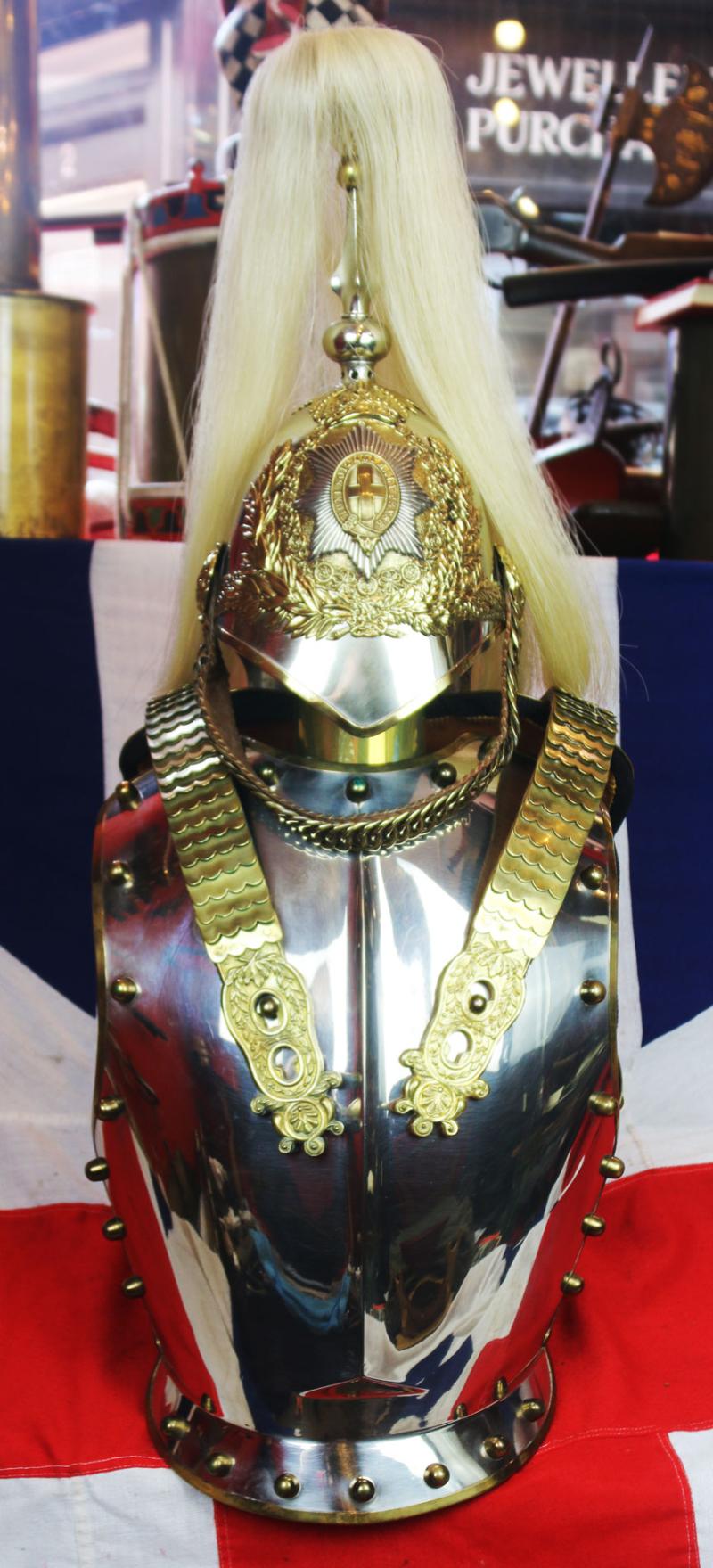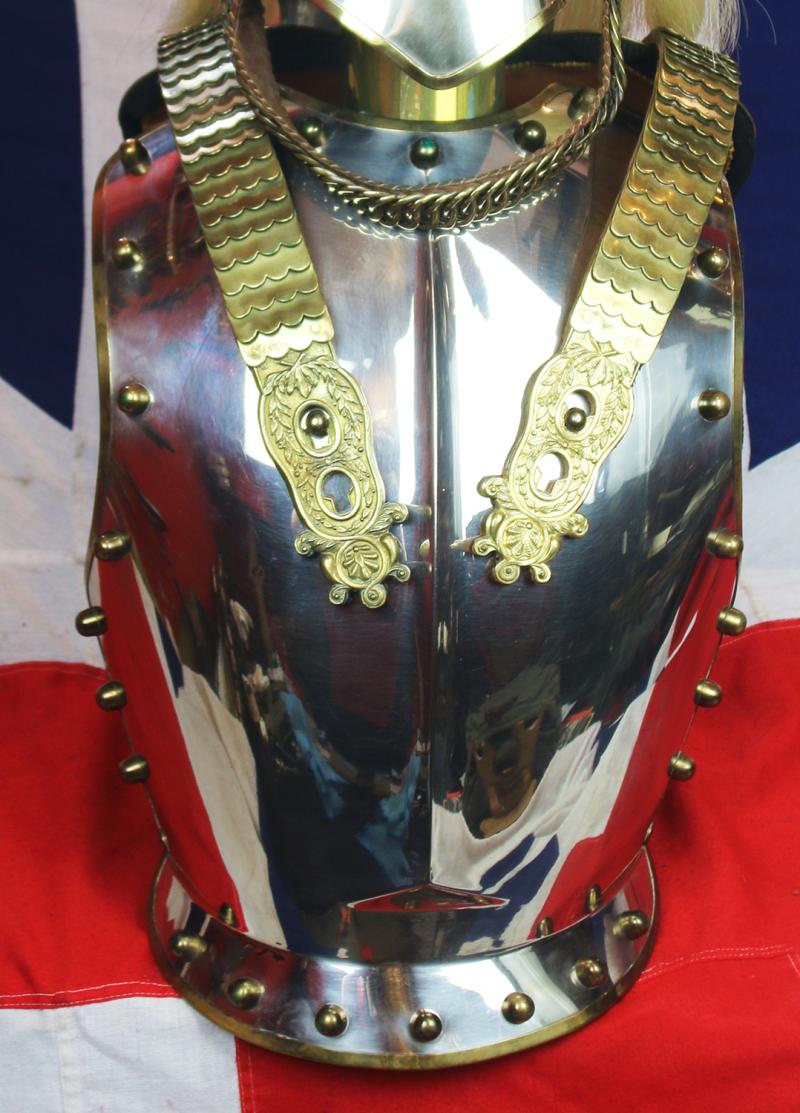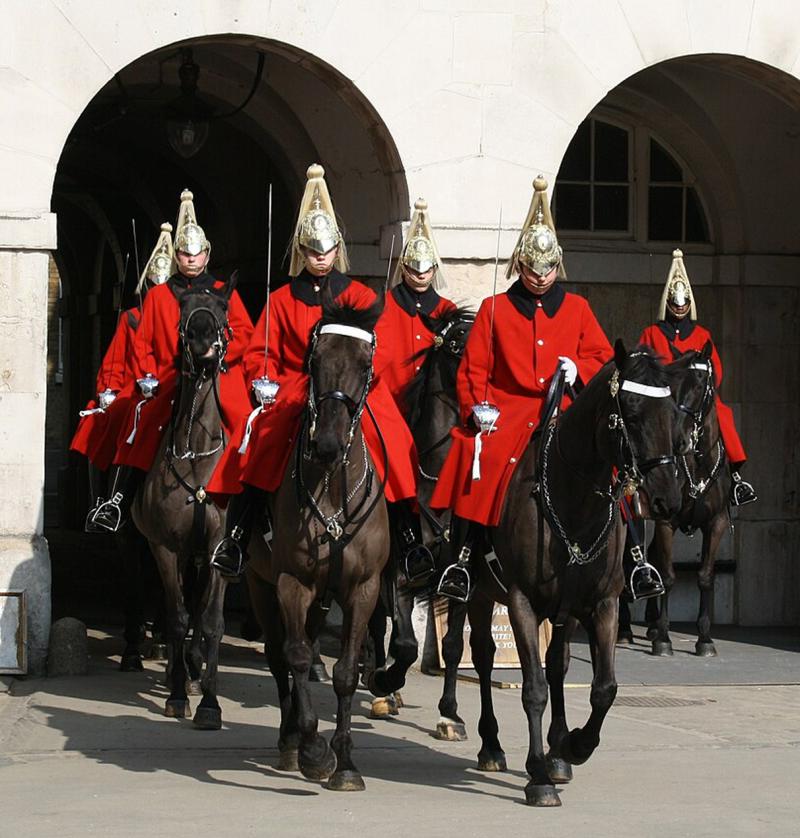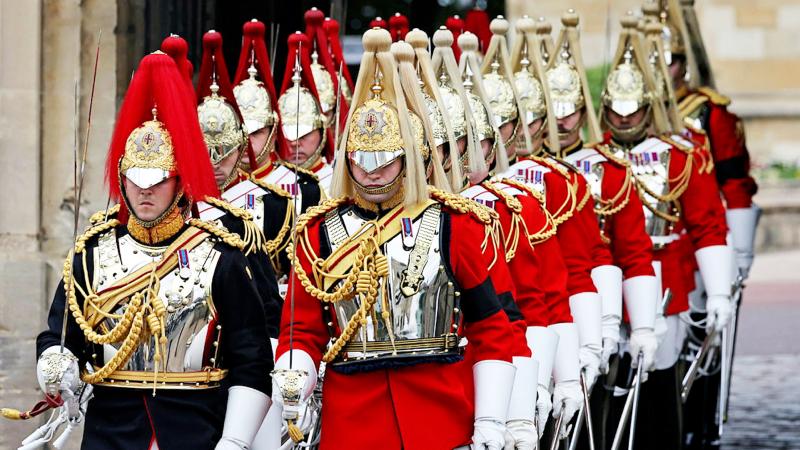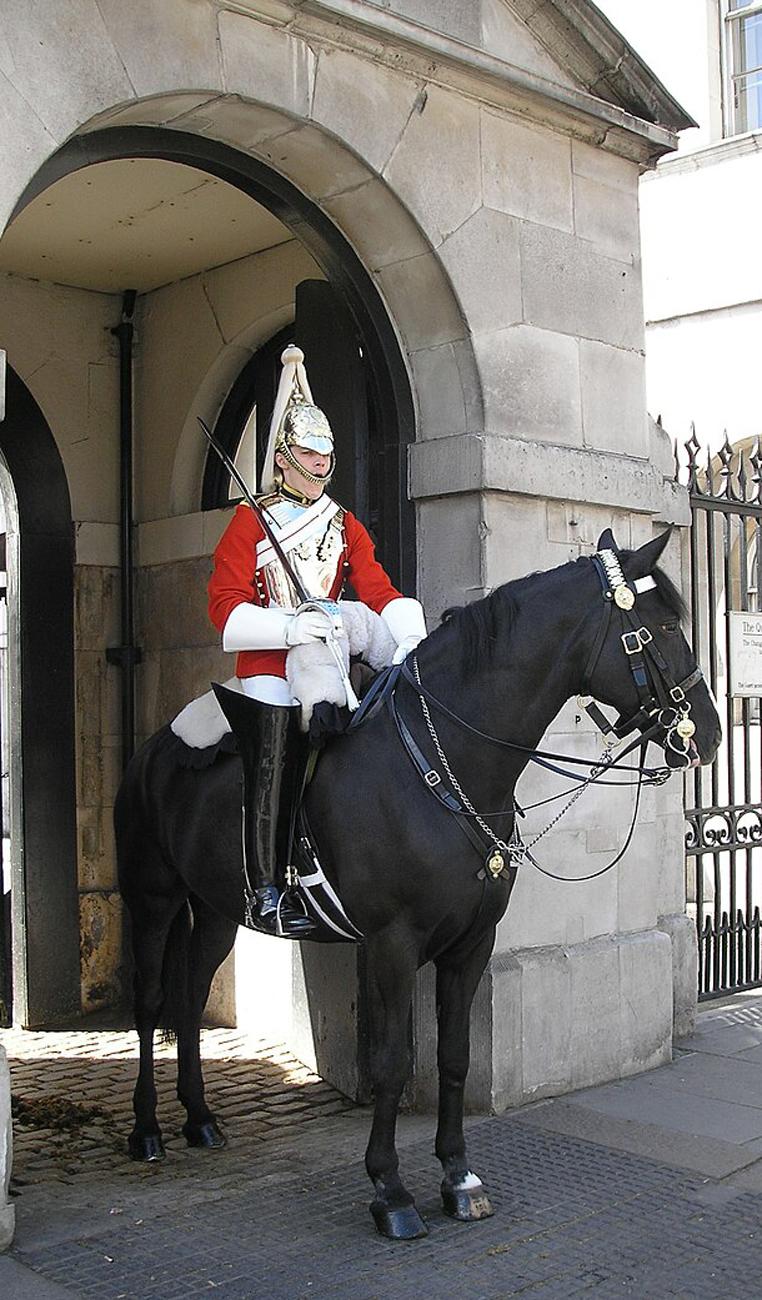Household Cavalry Helmet and Cuirass of the Life Guards George VIth Era, Used For Her Late Well Beloved Majesty Queen Elizabeth IInd. It Has the Crown Badge Now Used By His Majesty King Charles IIIrd {The Crowned Badge of his Grandfather King George VIth}
King George VIth WW2 period helmet, with cuirass . The full dress armour uniform helmet and armour of the Life Guards we also have a matching Life Guards red dress tunic with gilt bullion.
The Life Guards (LG) is the most senior regiment of the British Army and part of the Household Cavalry, along with The Blues and Royals.
The Life Guards grew from the four troops of Horse Guards (exclusively formed of gentlemen-troopers until the transformation of the last two remaining troops into Regiments of Life Guards in 1788) raised by Charles II around the time of his restoration, plus two troops of Horse Grenadier Guards (rank and file composed of commoners), which were raised some years later.
From 1812 to 1814, two squadrons from each of the Life Guard regiments served in the Peninsular War. In 1815 they were part of The Household Brigade at the Battle of Waterloo under Major-General Lord Edward Somerset. This would be their last active service for more than 60 years, during which time they performed ceremonial and public order duties in London.
Elements of the Life Guards, along with the Royal Horse Guards, formed the Household Cavalry Composite Regiment (HCCR) for active service. The HCCR was in action in the Anglo-Egyptian War of 1882 and the Second Boer War of 1899 to 1902. THe HCCR was mobilised again in 1914 at the start of the First World War, where they formed part of the British Expeditionary Force and fought in most of the major battles on the Western Front.8
In 1918, the two Life Guards regiments gave up their horses and were re-roled as machine gun battalions, becoming the 1st and 2nd Battalions, Guards Machine Gun Regiment. They reverted to their previous names and roles after the end of the war. In 1922, the two regiments were merged into one regiment, The Life Guards (1st and 2nd). In 1928, it was re-designated The Life Guards.
During the Second World War, again forming part of the HCCR, the Life Guards undertook armoured reconnaissance duties in Palestine, Iraq, Iran, Egypt and Italy. In 1944, the Life Guards took part in the Normandy landings and the advance through France to liberate Brussels. In the late 1940s, they were deployed to the Middle East, initially in Egypt, garrisoned at Kasr-el-Nil Barracks in Cairo from 1946 to 1947, and then in Palestine from 1947. In 1948, the unit left the Middle East and returned to England on leave. In 1952, it returned to Germany as part of the 11th Armoured Division.
The Household Cavalry are the only British regiments dressed as cuirassiers and has worn them since the coronation of William IV in 1830. The cuirass consists of a front and back polished steel plate shaped to fit the body. It had brass edges and studs on the sides and was secured on the shoulders by two gilt scales of regimental pattern. At the waist it is secured by a thin buff hide leather belt. The cuirass is lined with leather, The cuirass is only worn in mounted review order with the white leather panteloons and jack boots.
The Household Cavalry Regiment, The Life Guards (right) and The Blues and Royals (left) forming part of Her Majesty Queen Elizabeth's funeral procession (Picture: MOD).
By PRA - Own work, CC BY-SA 3.0, https://commons.wikimedia.org/w/index.php?curid=6654357
Code: 25333

